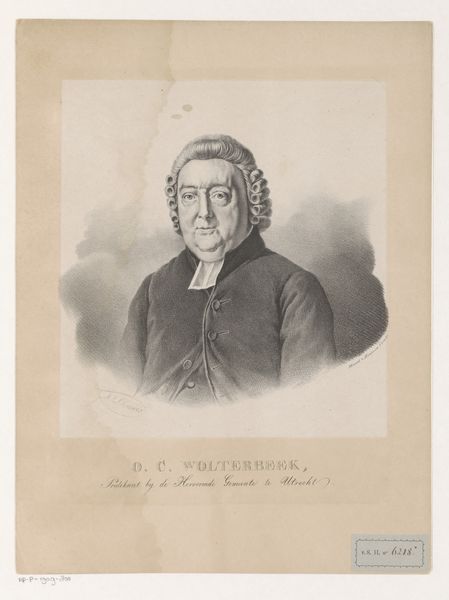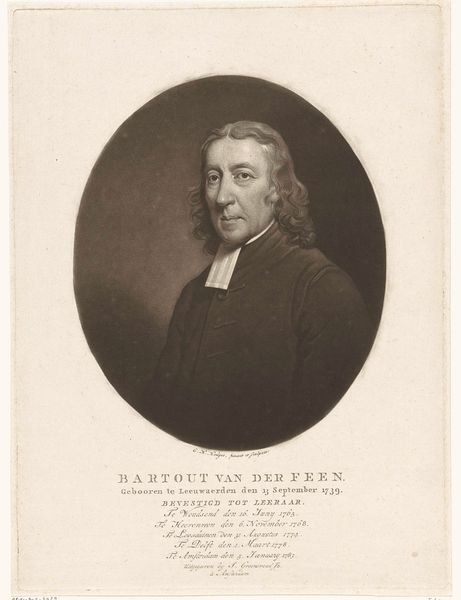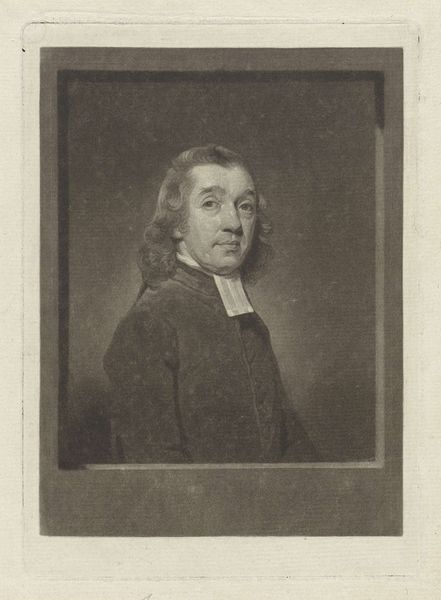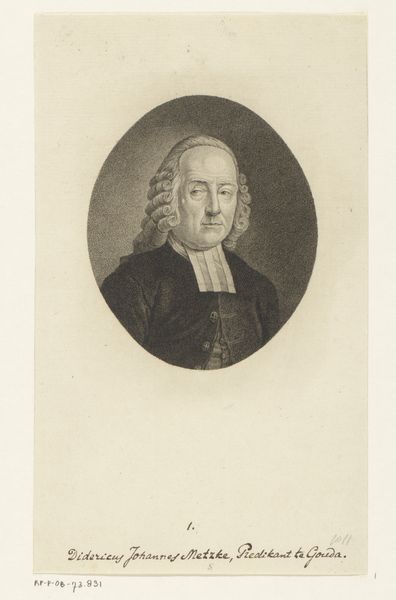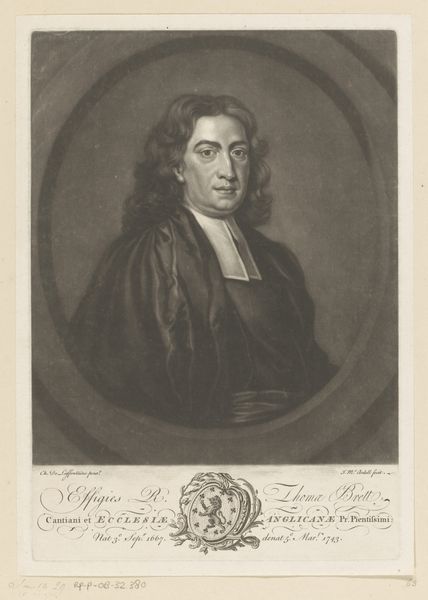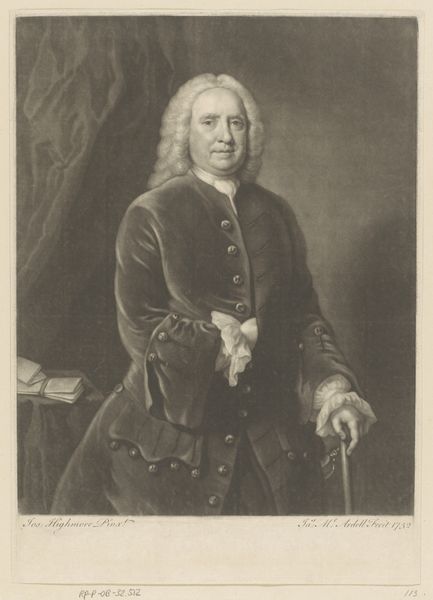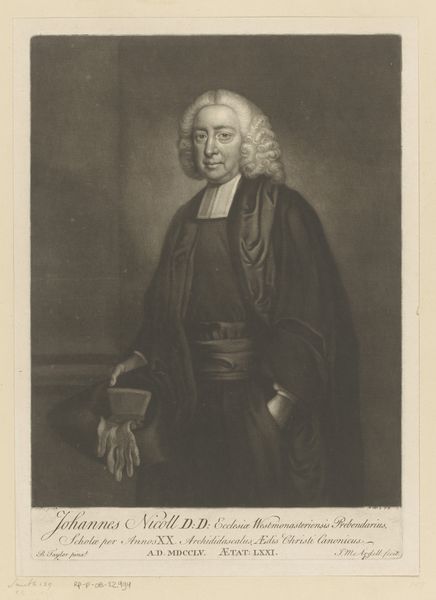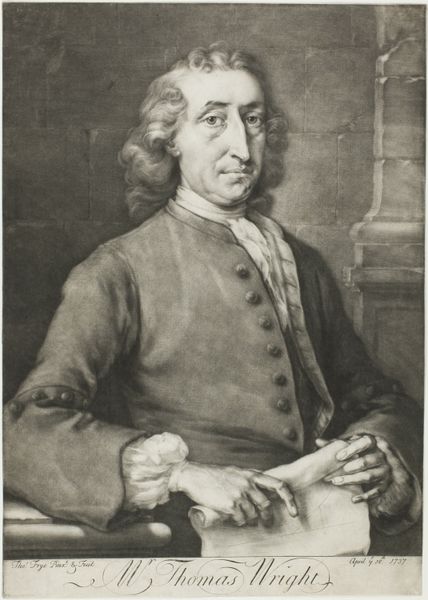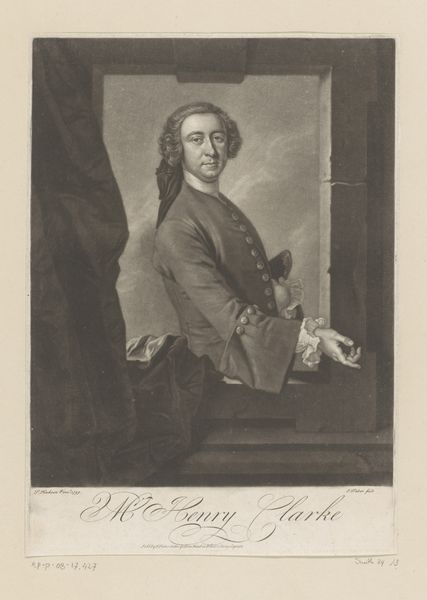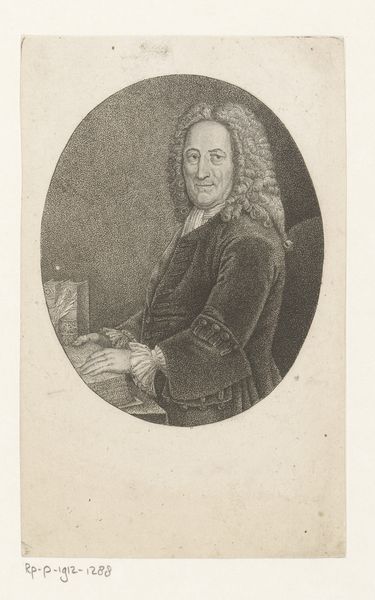
engraving
#
portrait
#
neoclacissism
#
dutch-golden-age
#
old engraving style
#
historical photography
#
history-painting
#
engraving
Dimensions: height 390 mm, width 278 mm
Copyright: Rijks Museum: Open Domain
Curator: Before us we have "Portret van de predikant Bartout van der Feen," an engraving housed here at the Rijksmuseum, completed sometime between 1783 and 1837 by Charles Howard Hodges. It exemplifies portraiture of the Dutch Golden Age, don't you agree? Editor: Yes, its monochrome palette immediately brings a sense of sober austerity. One imagines the layers of etched metal used in its creation. Curator: Indeed. As an engraving, it relies on linear precision to convey the likeness of Bartout van der Feen, and his personality. That clean, almost stark representation echoes the Neoclassical influences, moving away from the Baroque's extravagance. He wears a simple, unadorned garment with only a preaching tab, highlighting his role and status within the church. The text included under the image clearly tells us when he was born, and when he started preaching. It’s designed to serve a particular commemorative function, reinforcing ideals about civic and religious responsibility. Editor: The deliberate use of line creates form, but also hints at texture, conveying information about the material used. Considering that engravers during that period were also often involved in printing other ephemera, such as maps or sheet music, that labor history permeates this piece. We must also think of the production and distribution; how these portraits democratized access to the representation of public figures for consumption at different economic levels. Curator: That’s a fascinating way to consider its impact and distribution! The oval frame within the rectangular image itself adds another layer, framing him, quite literally, within a particular tradition and setting, reminiscent of classical portrait medallions which in turn signal intellectual standing. The lettering, with its own inherent curves and swashes, reminds us of a very specific historical period where calligraphy was closely aligned with artistic skill. Editor: Thinking about it that way, one also must wonder, how was this image originally used or consumed, how much were the artists paid? It is, in many ways, an artifact that serves to illuminate broader historical production systems, in a time where technology and ideology were just beginning to really influence artistic means of production. Curator: Precisely. Examining it through these dual perspectives – Hodges' skilled rendering and the print's inherent symbolic value and also a more production-based understanding -- provides a richer appreciation of this engraving. Editor: Absolutely; through both the artistry of representation and considering production context we appreciate how these combined aspects shape our understanding of not only Bartout van der Feen, but also a slice of 18th-century Dutch culture and the visual economies in use at the time.
Comments
No comments
Be the first to comment and join the conversation on the ultimate creative platform.
